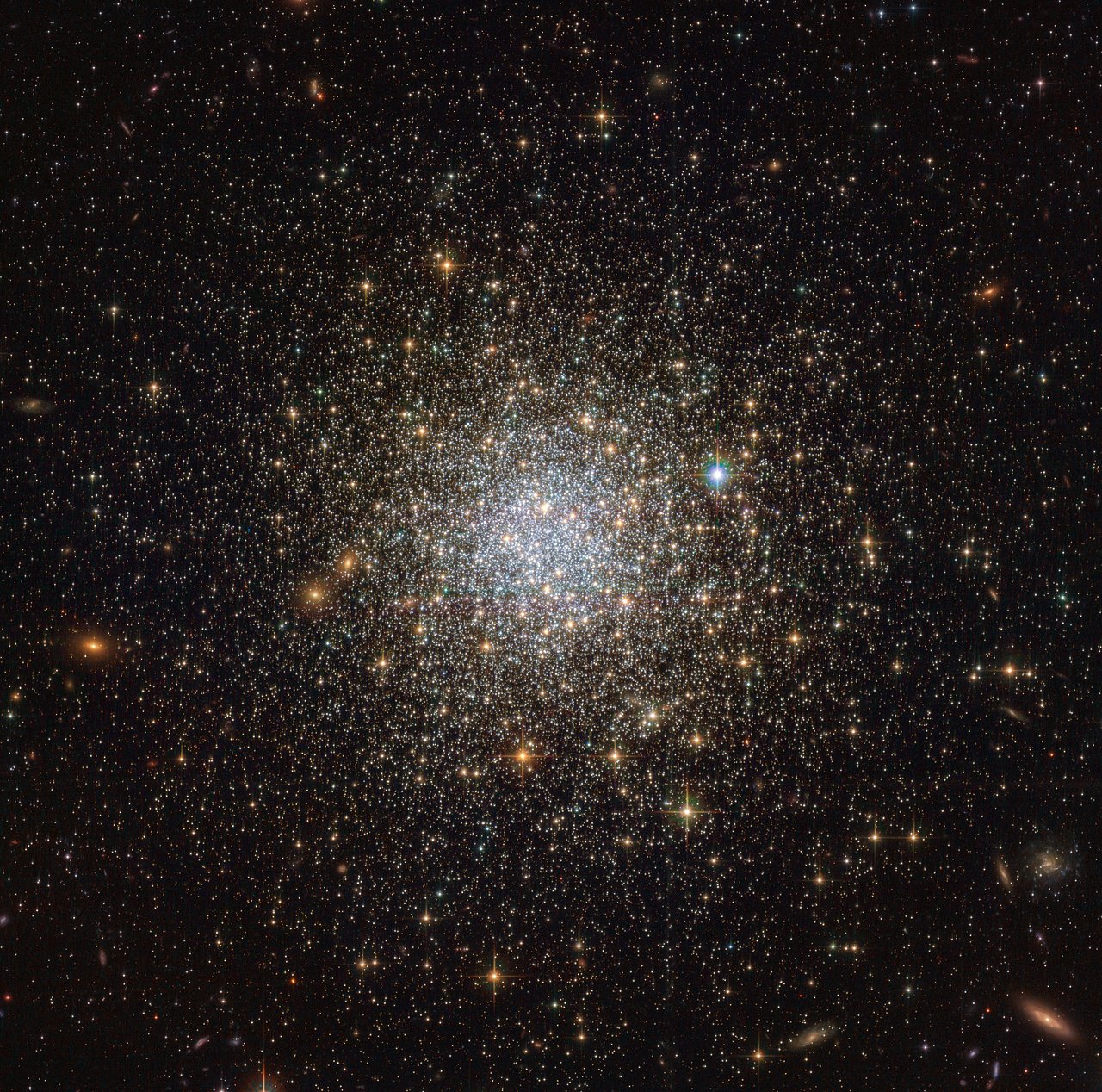
This Hubble image shows a scene within the bounds of our galactic neighbor, the Large Magellanic Cloud (LMC) galaxy. This particular object, called NGC 1466, is a type of star cluster called a globular cluster — a group of stars that are held together by gravity and which move together through the edges of the LMC. It is located 160,000 light-years away from Earth. Together, NGC 1466 weighs the equivalent of 140,000 of our Sun and is extremely old. Scientists calculate it is 13.1 billion years old, which is nearly as old as the universe itself.
The object provides more than just a pretty picture, however. Observations from Hubble have revealed more about how star clusters form and grow. Because star clusters are active and evolving, with structures that change over time, larger and heavier stars tend to sink towards the middle of the cluster. Over time, the core of the cluster contracts.
However, there’s something odd about the star clusters in the LMC. The younger clusters are compact, while older clusters come in both compact and diffuse forms. The new research suggests this can be understood by looking at a type of “re-invigorated star” called a blue straggler. These stars collect extra fuel as they travel and become significantly brighter. And because they have high masses, the stragglers are pulled to the center of clusters.
This means that astronomers are able to observe blue stragglers in LMC clusters and use these observations to rank the clusters in order of age. “We demonstrated that different structures of star clusters are due to different levels of dynamical aging: they are in different physical shape despite the fact that they were born at the same cosmic time,” Francesco Ferraro of the University of Bologna in Italy explained in a statement. “This is the first time that the effect of dynamical aging has been measured in the LMC clusters.”
This data could be useful for future research as well, co-author Barbara Lanzoni said in the same statement: “These findings present intriguing areas for further research, since they reveal a novel and valuable way of reading the observed patterns of LMC star clusters, providing new hints about the cluster formation history in the LMC galaxy.”
Editors' Recommendations
- Hubble discovers over 1,000 new asteroids thanks to photobombing
- The expansion rate of the universe still has scientists baffled
- See what James Webb and Hubble are observing right now with this tool
- Hubble spies baby stars being born amid chaos of interacting galaxies
- James Webb snaps a stunning stellar nursery in a nearby satellite galaxy




